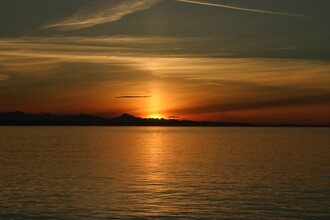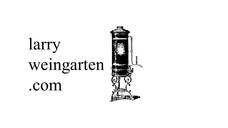 Water requires a great deal of energy. In California for example: extracting, treating, moving, heating, and disposing of it account for about 30% of the state’s total energy usage. That’s a lot! What can we do to reduce water and energy waste for ourselves? Houses need replumbing sometimes and this gives a great opportunity to save water and energy… and get better performance from the system. By the way, installing an efficient plumbing system can cost less that putting in an inefficient system! Manifold and demand systems are two approaches to look at. Simply installing low-flow fixtures can backfire if hooked up to an inefficient system. It will slow flow rates in the lines and cause longer waits for hot water at the shower and elsewhere. Manifold plumbing, to put it simply, means running an individual small line to each fixture. If the fixtures are close together, as is common in older homes, this could be a great way to save water and energy and get hot water much faster. Also, it could mean running small (like 3/8”) tubing to the fixtures, which is much easier than running bigger pipe. Demand controlled systems use the typical main and branch plumbing, but add a pump to push the cooled water out of the hot line into the cold or a dedicated return, so when you turn on a tap, you get hot water quickly, with far less waste. They are great for retrofits where the plumbing system is basically sound, but inefficient. The simple act of heating water seems to divide us into different camps. Tank-type heaters versus tankless. This is a question where all the circumstances around what heater is used, need to be considered. Will the owner maintain the equipment? How hard is the water? Tankless doesn’t like hard water. What sort of hot water service is needed? A one-size-fits-all approach really doesn’t fit here! And then there is the 120-degree water vs 140-degree question… or named differently, Legionnaires disease vs scalding. The plumbing community still doesn’t fully agree on how to make this decision. There are a variety of mixing or tempering valves which can help, but hard water or incorrect sizing will play havoc with them. If there are any very old, young, or immune compromised people in the house, it makes sense to store the water hotter and then mix it down to a safe temperature. Otherwise, I like to keep water around 130 degrees and just be careful when using it. Having the heater hooked up to efficient plumbing will go a long way towards making the water better/safer for use also. If the piping is sized right, water will travel down the line at a rate of at least one foot per second. This will scrub the lines, helping prevent slime and bacteria from growing in the pipes. Staying healthy is a nice side benefit of efficient plumbing! Still, whatever the equipment or its usage, opportunities likely exist, depending on building shape and orientation for energy savings via heat recovery and/or solar heating. Shower drain heat recovery is one great way to plug an energy leak. It can capture 60% of the energy that would have gone down the drain. Efficient fixtures on small lines are another approach. Running hot water only to places that actually need it is another. Many dishwashers can heat their own water, so a hot supply isn’t needed. Clothes may not need to be cleaned in hot water as modern detergents can do the job. Certainly, other opportunities will show up if we look for them. Maintenance can greatly extend equipment life. I’ve gotten fifty years from tank-type water heaters with simple maintenance, yet we’re told to worry if the heater is over ten. A life-cycle cost approach can be used to bring order when thinking about water heating choices. When all costs over time are taken into account, it becomes easy to see what equipment really costs less and which approach saves the most energy and water. Then you can factor in the savings in waiting times, headaches when equipment fails on holidays, and reduced risk of flooding and property damage. On another topic, outdoor water usage may be controlled with thoughtful yard design, grey water, and rainwater catchment. Houses often use far more water outdoors than inside. People think pools use a lot of water, but then don’t think about their lawns! Looking at our overall water usage, compared to other countries, there is just a little room for improvement. Around the world, the most water efficient people are in Africa, using as little as 392 cubic feet of water per person per year. In America, we use from 36,600 to 189,740 cubic feet per year! That’s up to 484 times as much. We’re amongst the least water efficient in the world. I imagine we can do a bit better. The Western US is looking at another drought, so we have no choice but to do better, and quickly. I’ve found that with energy efficiency, it’s not all that hard to get by comfortably on 20% of the power most people use. I imagine we can do something similar with water if we step away from old habits and get creative. I know I’ve wandered all over the world with these ideas, but hopefully have given you some ideas and things to look into to get the benefits of saving water and energy for yourself. Yours, Larry
0 Comments
|
Larry Weingarten
Looking back over my working life of 50+ years, it seems clear that self sufficiency has always been the best way for me to be useful. Now, mix in a strong interest in water in its many forms and the wide world of animals and you'll know what's important to me. Archives
January 2023
Categories |
Copyright © 2014 - 2023
All Rights Reserved
All Rights Reserved



 RSS Feed
RSS Feed